Explore the exhibition
One of the key figures of the Polish avant-garde, Rosenstein’s wartime survival, commitment to Surrealism, and lifelong adherence to leftist ideologies course through a remarkable array of paintings, drawings, and assemblage sculptures, as well as poems, diaristic writings, and deceptively whimsical children’s stories. Steeped in an extraordinary history and responding to the Nazi occupation of Poland, personal traumas suffered in the Holocaust, the postwar sociopolitical upheaval of her native country, and passionate engagement in the intellectual circles of her times, Erna Rosenstein’s work defies simple classification.
Her six-decades long career was fueled by the formation of prewar artistic, intellectual, and political affiliations, and is expressed through her continued oscillation between autobiographical figuration and biomorphic abstraction. Grappling with themes of memory, trauma, longing, and loss, she used paint, ink, and found materials to suggest a world tinged with allegory, enchantment, and fairy tale.
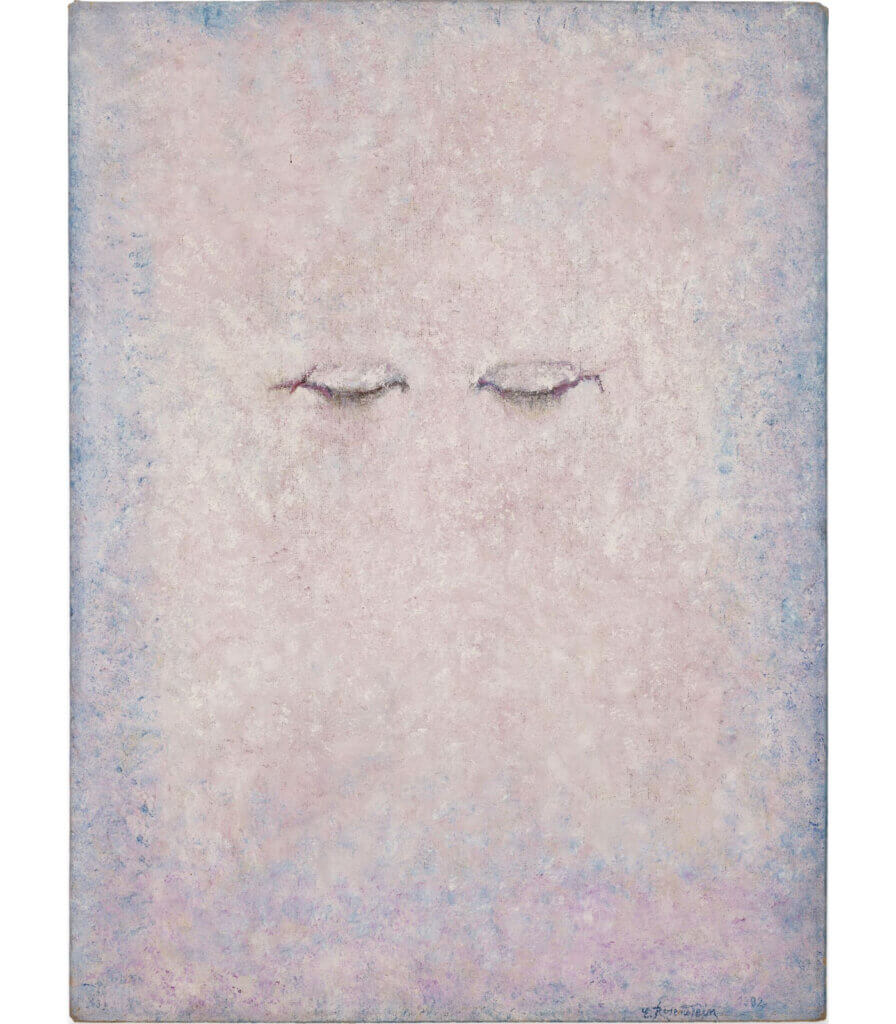
Bez granic (Without Borders)
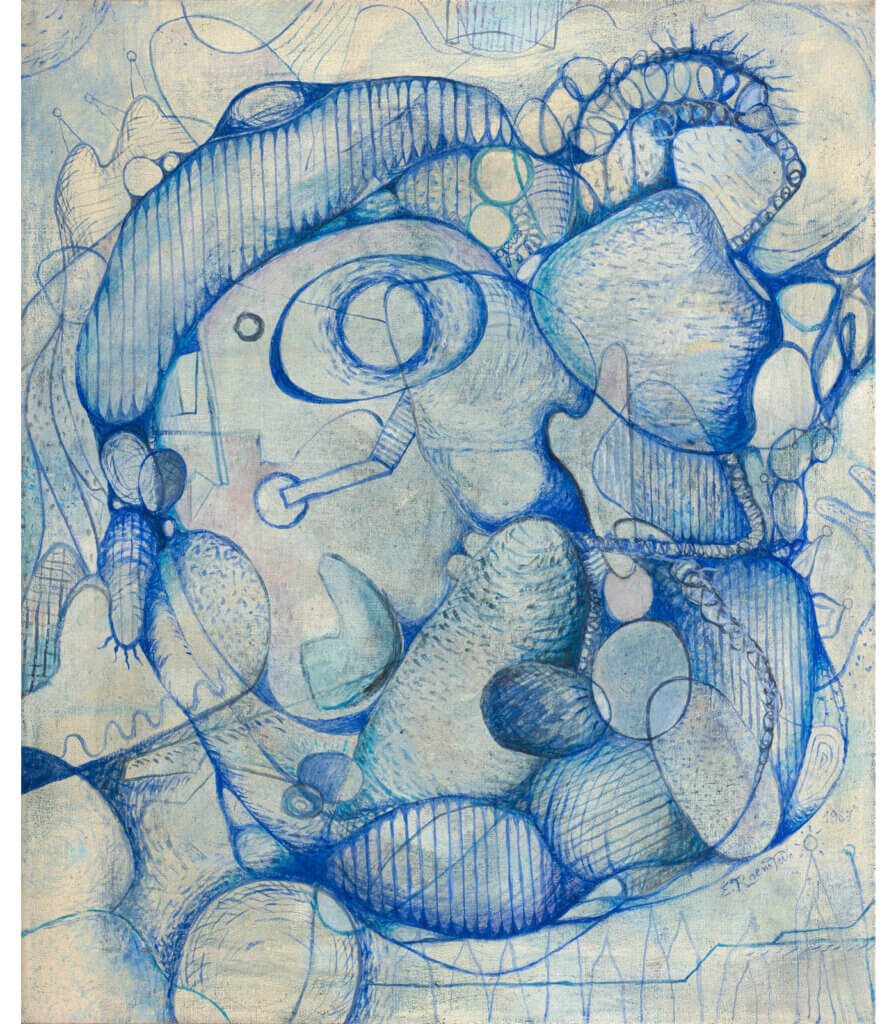
Nad głowami (Over the Heads)
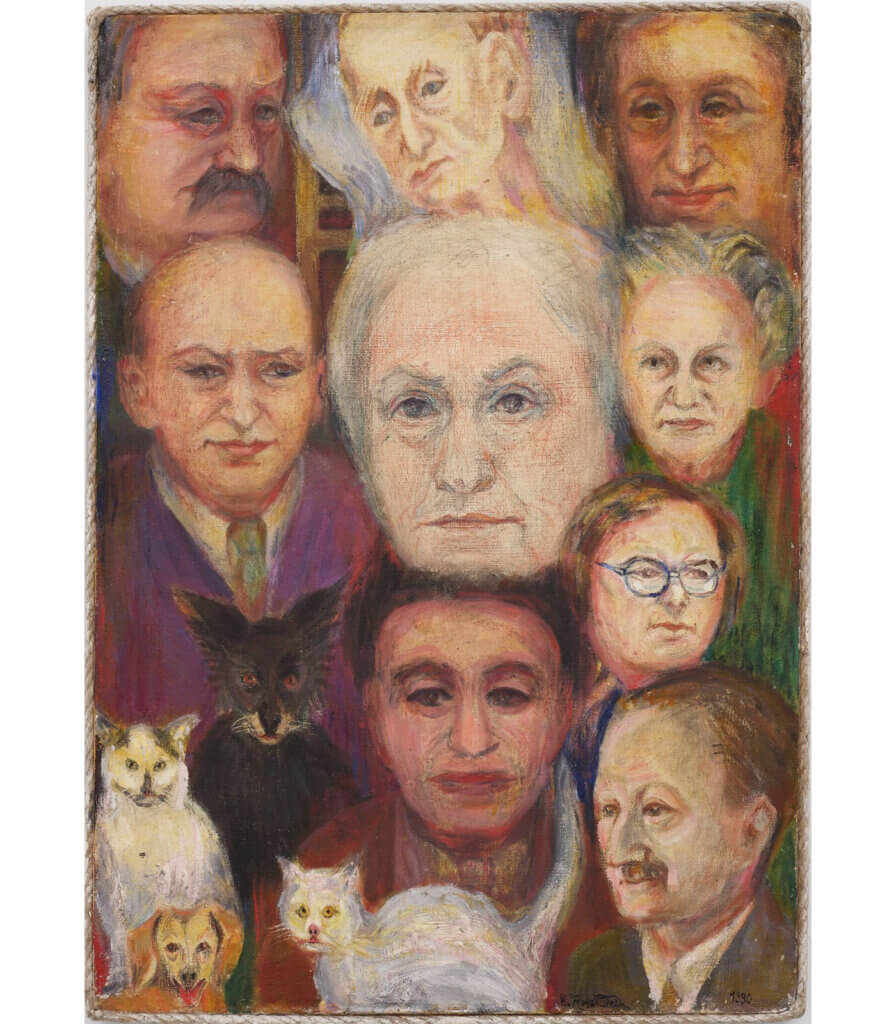
Obecność (Presence)
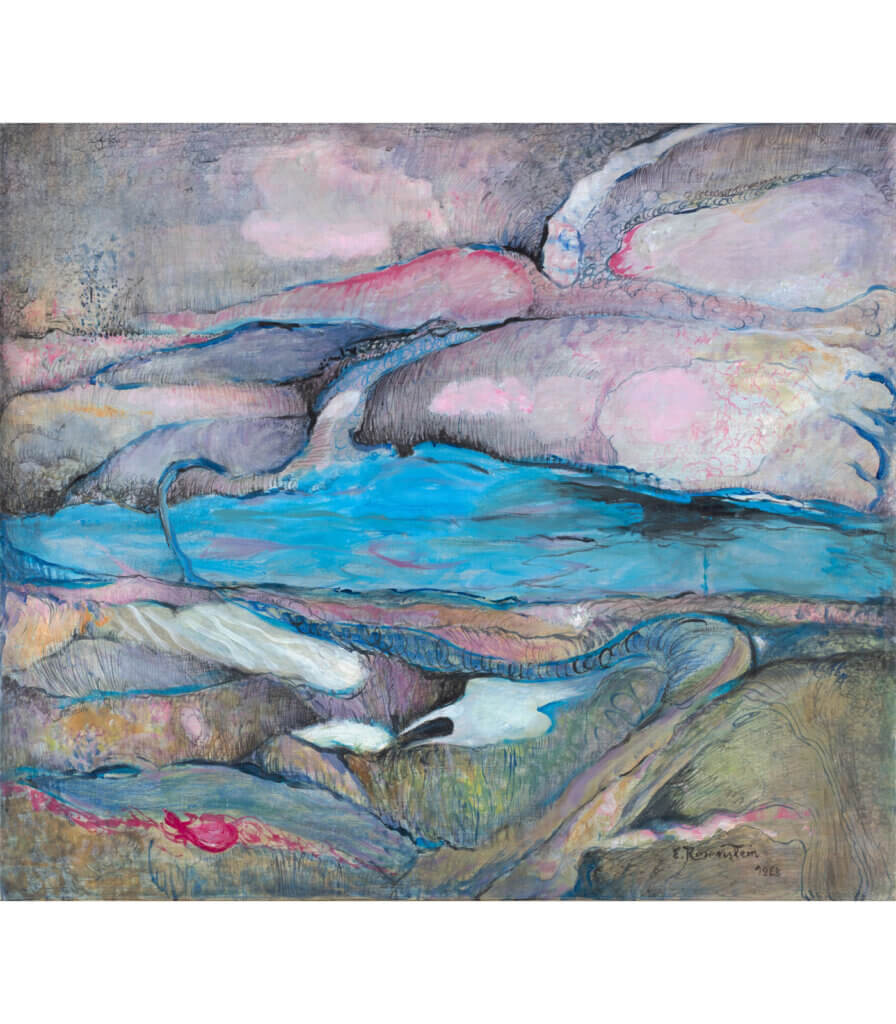
Poświata (Afterglow)
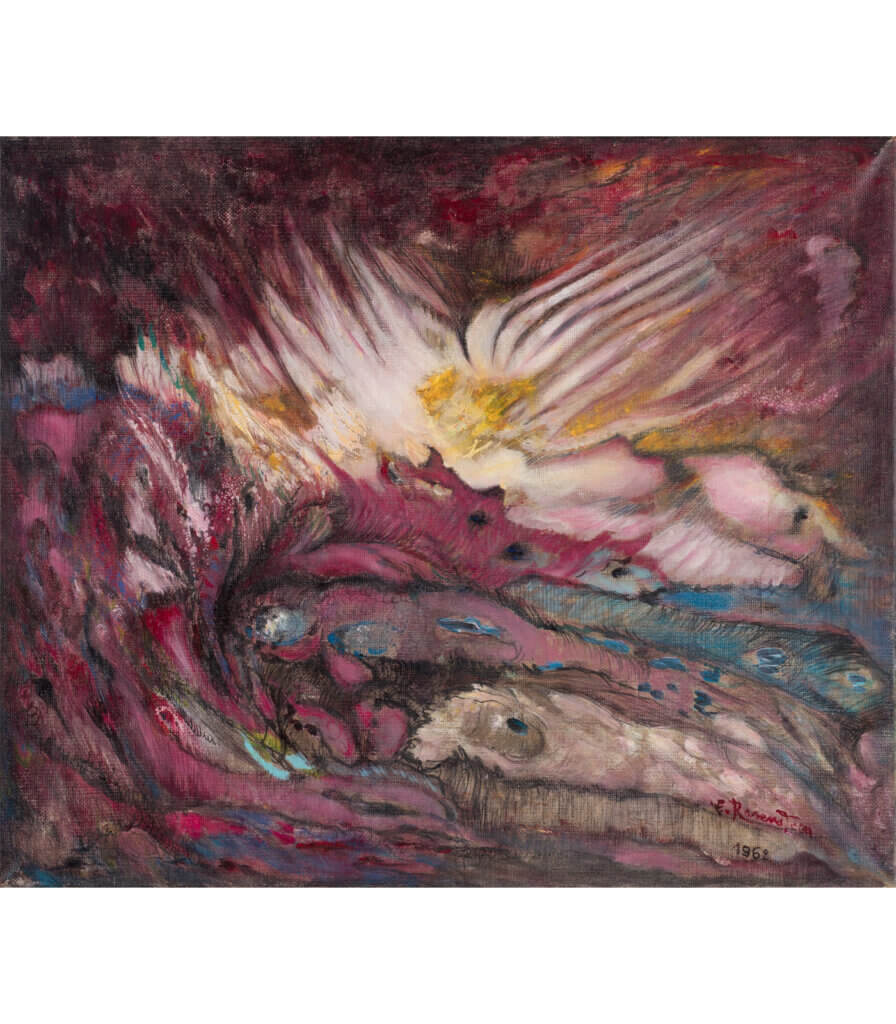
Prześwit (Clearance)
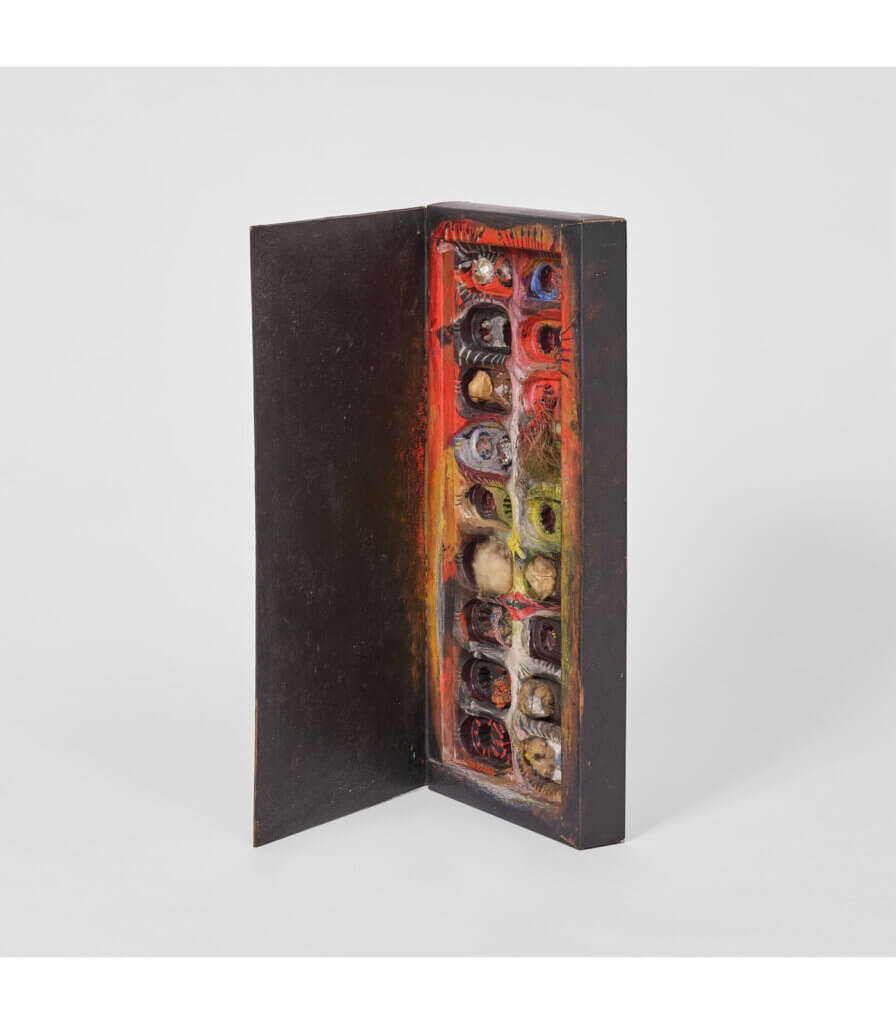
Skarbiec (Treasure Chest)
‘Once Upon a Time’ has been organized by curator Alison M. Gingeras. The exhibition brings together over forty works never seen outside of Poland, including institutional loans of landmark paintings and works from The Estate of Erna Rosenstein being exhibited publicly for the first time since the artist’s death in 2004. ‘Erna Rosenstein. Once Upon a Time’ is Hauser & Wirth’s first presentation of the artist’s work since undertaking representation of her estate in 2019, in collaboration with Foksal Gallery Foundation, Warsaw.
‘Once Upon a Time’ is comprised of paintings and sculptures that embody the constant interplay of figuration and abstraction, the literal and the fantastical, in Rosenstein’s oeuvre. The works on view draw from the many personal experiences, emotional losses, and haunting traumas surrounding her Jewish identity. A highlight of the first floor of the exhibition includes a zigzagging wall that recreates the unconventional design of Rosenstein’s landmark 1967 monographic exhibition at the Zachęta National Gallery of Art in Warsaw.
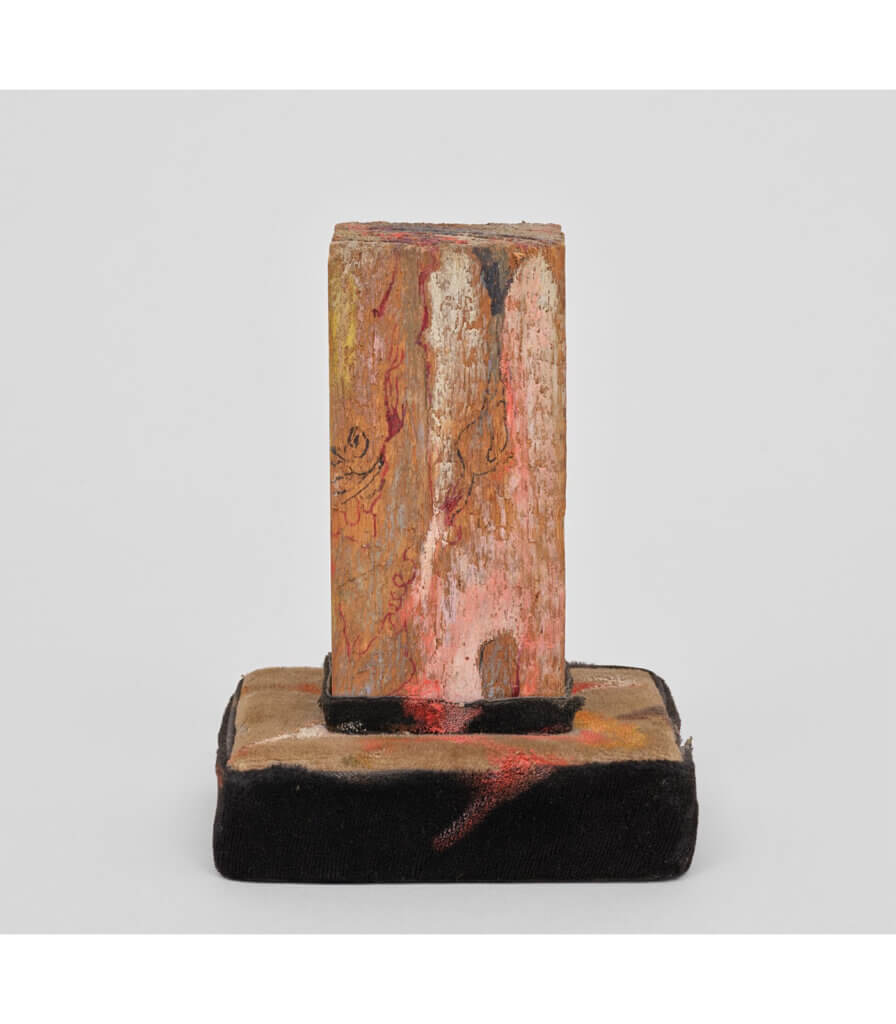
Untitled
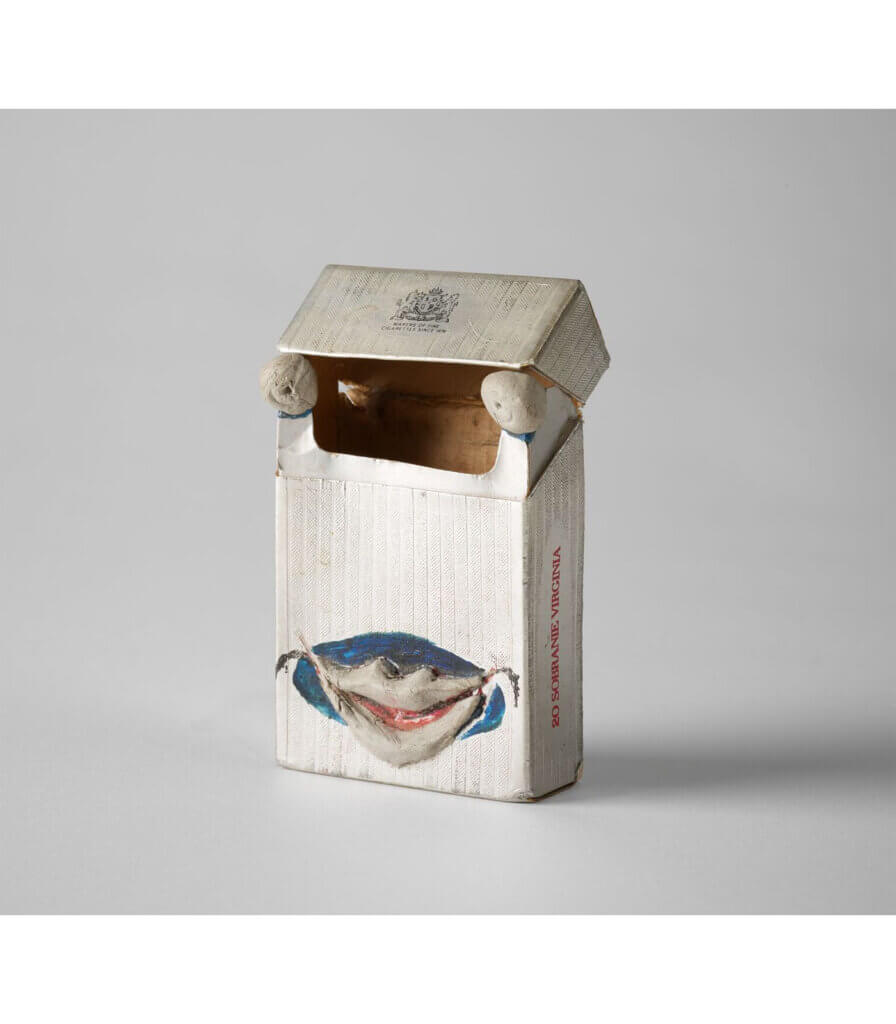
Untitled
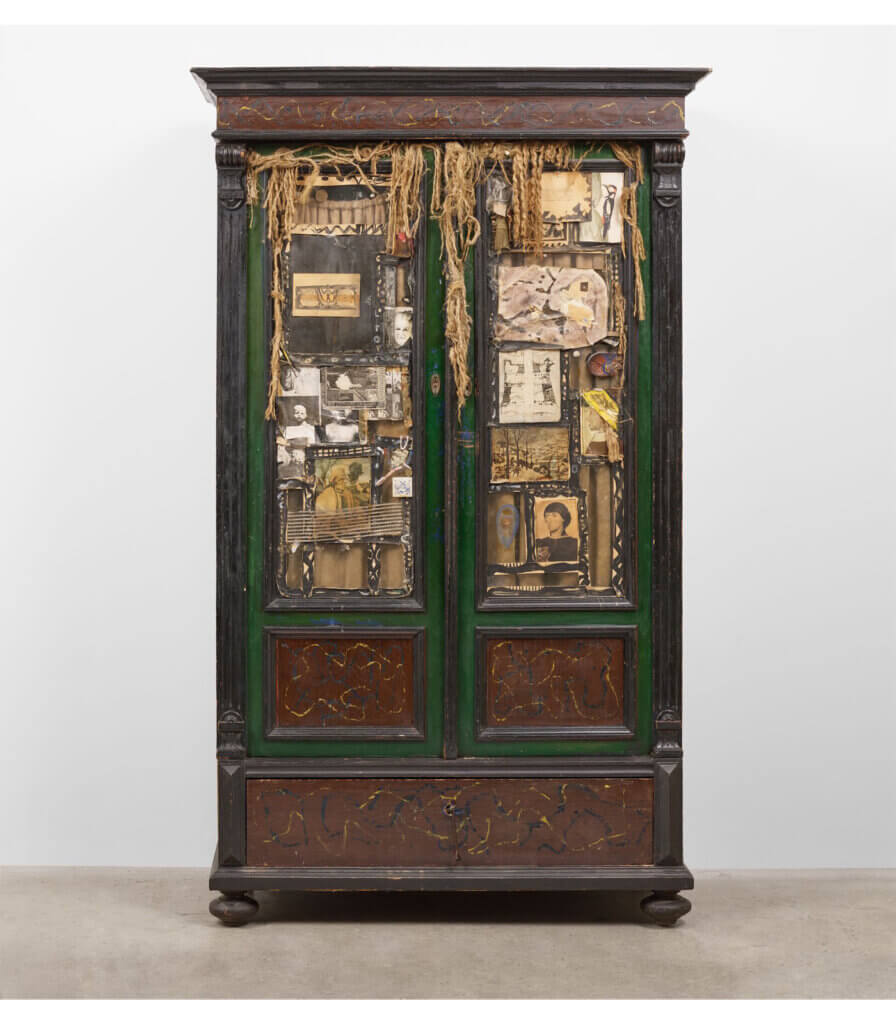
Szafa (Cabinet)
![Północ (Portret matki) (Midnight [Portrait of the Artist’s Mother])](https://www.vip-hauserwirth.com/wp-content/uploads/2021/09/ROSEE103102-web-hires_Feature-896x1024.jpg)
Północ (Portret matki) (Midnight [Portrait of the Artist’s Mother])
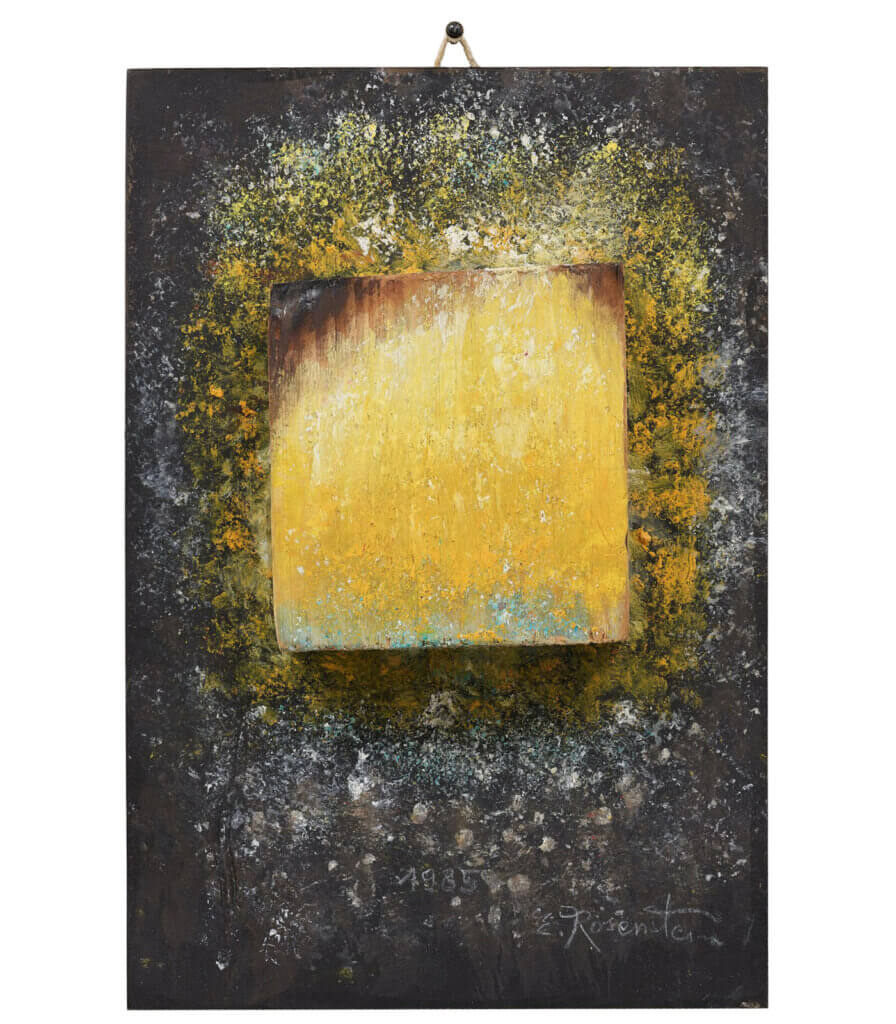
Źródło (The Spring)
![Świt (Portret ojca) (Dawn [Portrait of the Artist’s Father])](https://www.vip-hauserwirth.com/wp-content/uploads/2021/09/ROSEE103101-web-hires_Feature-896x1024.jpg)
Świt (Portret ojca) (Dawn [Portrait of the Artist’s Father])
Dating from the early 1950s to the end of the 1970s, abstracted landscapes and biomorphic reveries are hung on the wall in succession, demonstrating the intense focus of those two decades of her practice and reflecting the political and personal turmoil of those years. The work ‘Poświata (Afterglow)’ (1968), depicts a babbling brook running down from the valleys and rolling hills of a pastel landscape rendered in billowing pinks and citron greens, while in contrast, the painting ‘Kwiaty piekła (Hell Flowers)’ (1968) is saturated in deep reds and vibrating biological forms, evoking the sensation of nerve endings or internal organs.
In addition to a survey of Rosenstein’s multifaceted painting work, ‘Once Upon a Time’ also includes a selection of untitled assemblages made by the artist beginning in the early 1980s, a period of martial law in Poland when scarcity prevailed. These works – among them a cigarette pack with eyes, and an old purse with teeth – transform the most everyday bric-a-brac into the substance of art, and further collapsing boundaries between figuration and abstraction. They reflect the whimsical and childlike aspects of Rosenstein’s practice and mirror the artist’s early Surrealist expressions.
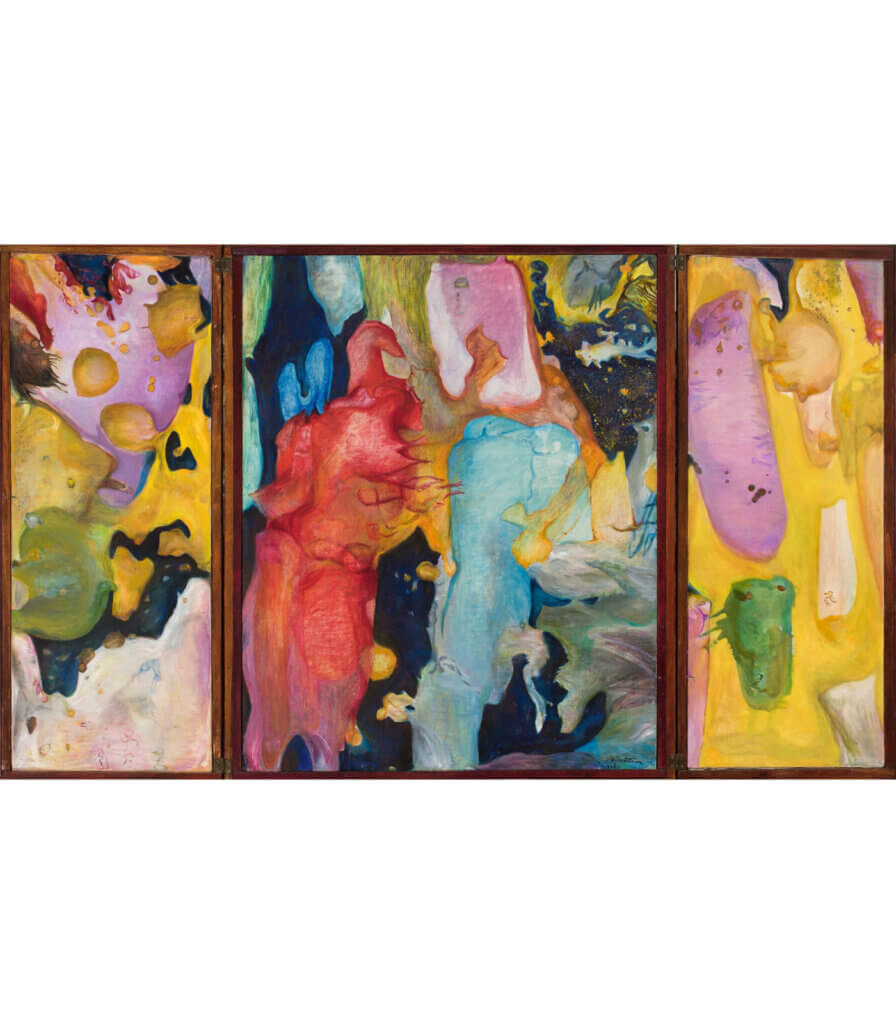
Tryptyk ciszy i ognia (Silence and Fire Triptych)
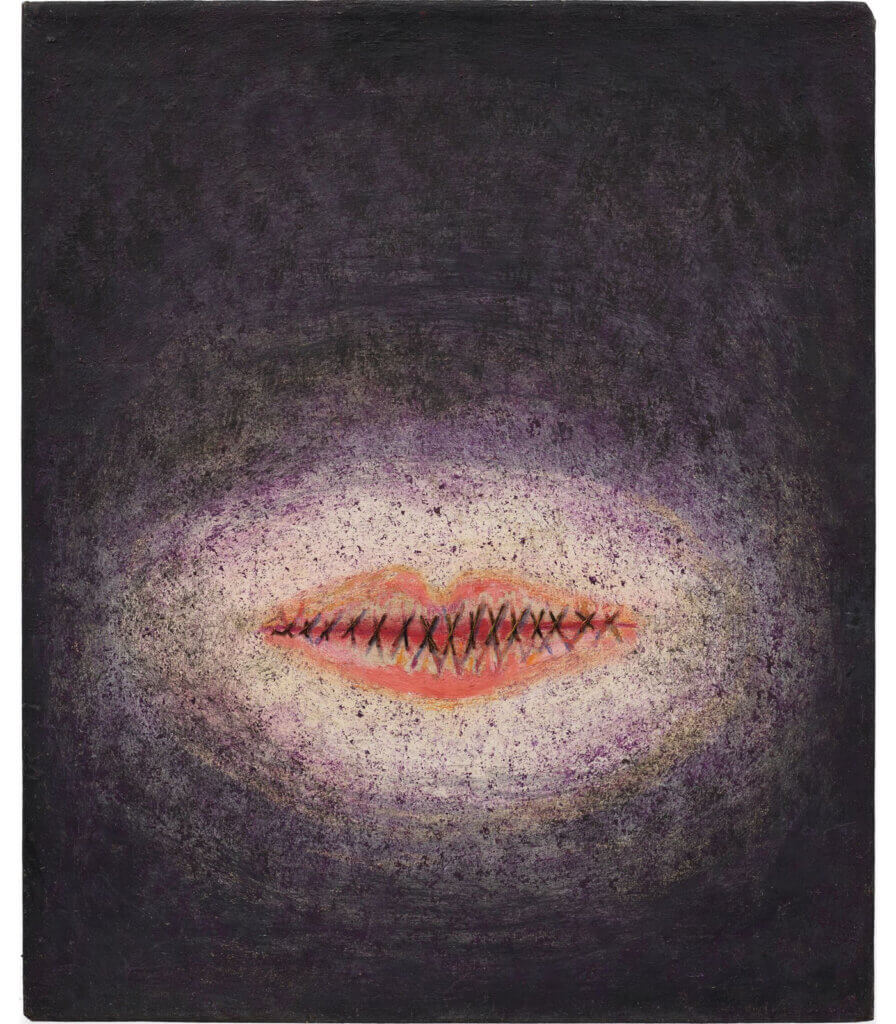
Usta (Lips)
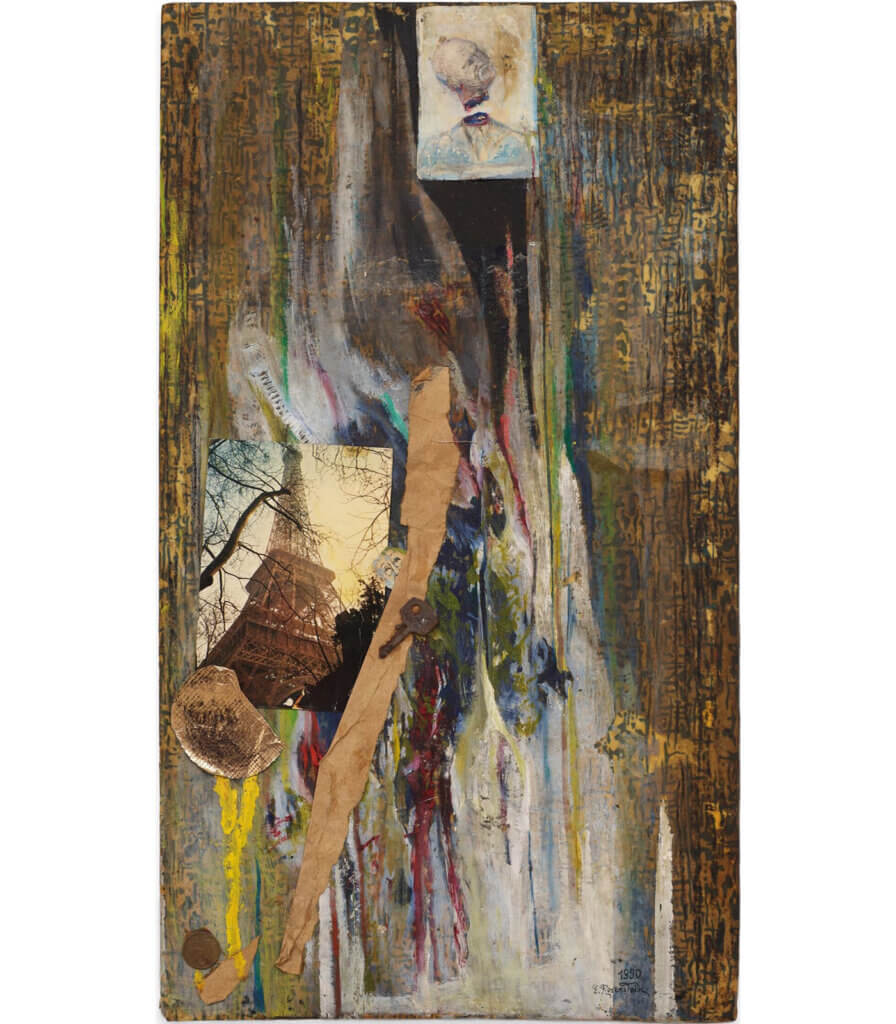
Wciąż trwa (Lasting Still)
Exhibition Guide
Explore the exhibition in greater depth with the exhibition guide highlighting key works and themes in the exhibition. This richly illustrated guide includes insightful text by curator Alison M. Gingeras and rare archival images. Physical copies are available at the gallery.
About the artist
Born in 1913 in Lwów (now the Ukrainian city Lviv) and raised in Kraków, Erna Rosenstein emerged as part of the Polish avant-garde in the 1930s, associated with the Kraków Group. She studied at the Wiener Frauen Akademie in Vienna in 1932-1934 and then at the Academy of Fine Arts in Kraków between 1934-1937. She was part of a tight-knit circle whose artistic innovations were rooted in socially progressive left-leaning politics and who mobilized actions under the Communist Union of Polish Youth. As part of the Kraków Group, she identified with such fellow artists as Jonasz Stern, Jadwiga Maziarska, and especially, Tadeusz Kantor, whose underground experimental artistic and theater activities embraced Surrealism.
Erna Rosenstein in her studio on Karłowicza Street in Warsaw, 1958. Photography: Tadeusz Rolke, Agencja Gazeta
Inquire about available works by Erna Rosenstein
 Scan the image to begin
Scan the image to begin